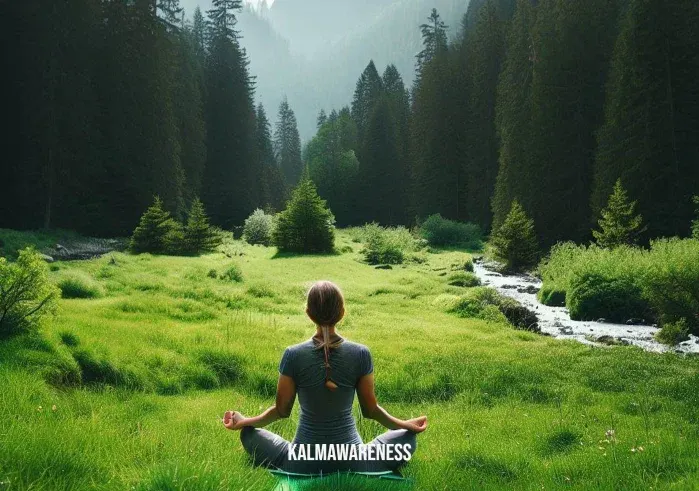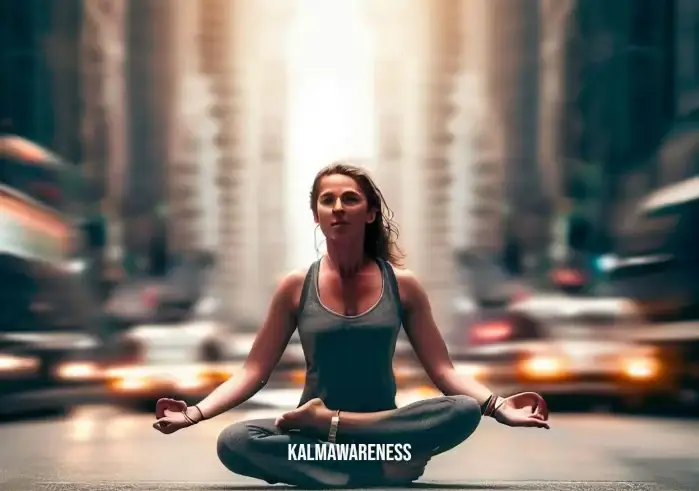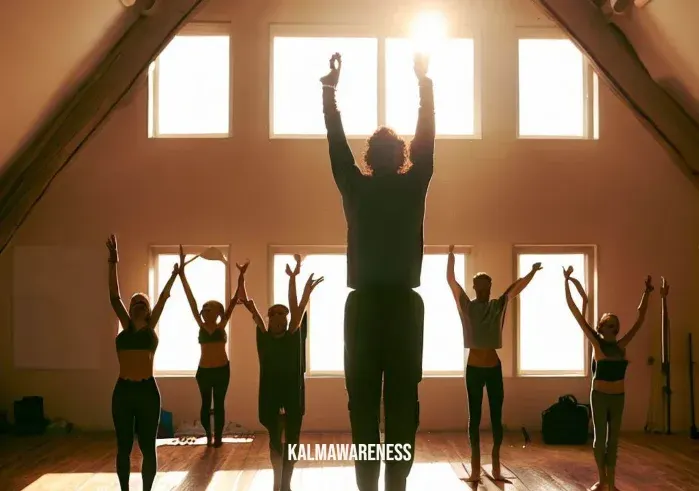Mastering the Grounding Pose in Yoga
Master the grounding pose in yoga: A complete guide to help you perfect your grounding pose in yoga
Yoga is an ancient practice, a treasure trove of mind-body exercise that offers a vast range of benefits. One such benefit is the feeling of being grounded or rooted in the present moment. This is where the grounding pose yoga comes in.
As we venture into the world of yoga, we’ll explore how to perform this pose for beginners and advanced practitioners alike, what the pose entails, and how it can enrich your yoga practice.
Join me as we dive deeper into the grounding pose yoga, its step-by-step instruction, and its various benefits.
Grounding Pose in Yoga
| Description | Explanation |
|---|---|
| Pose name | Grounding Pose |
| Original name | Muladhara Asana |
| Difficulty level | Beginner to Intermediate |
| Pose category | Standing Pose |
| Exercise duration | 1-3 minutes |
Understanding the Grounding Pose
Grounding pose yoga, also known as the Muladhara Asana, is a fundamental pose practiced in various forms of yoga. The term “Muladhara” is derived from the Sanskrit words “Mula,” which means root, and “Adhara,” which means support or base. This pose helps establish a strong connection between the body and the earth, promoting stability and balance.
“In a world full of hustle and bustle, grounding pose yoga offers a sanctuary of calm and presence.”
Preparing for the Grounding Pose
To embark on your grounding pose journey, it’s essential to begin with a well-structured warm-up. A sequence of gentle stretches and some cardio exercises like jogging on the spot or skipping can help your body become more receptive to the grounding pose.
Below is a beginner-friendly warm-up sequence:
- Start with some gentle neck rotations, five times in each direction.
- Proceed with shoulder rotations, again, five times each direction.
- A series of ten jumping jacks is perfect for elevating your heart rate.
- Lastly, warm-up your leg muscles with some gentle knee rotations, five times each direction.
Once you’re warmed up, it’s time to move into the grounding pose.
Grounding Pose: Step-by-Step Guide for Beginners
Performing the grounding pose may seem daunting at first, but with a bit of patience and practice, you’ll be able to master it in no time.
Here’s a step-by-step guide for beginners:
- Start by standing tall with your feet hip-width apart.
- Relax your shoulders, straighten your back, and maintain a neutral neck.
- Engage your core and bend your knees slightly, establishing a firm connection with the ground.
- Extend your arms on either side of your body, palms facing downward.
- Breathe slowly and deeply, focusing on the sensation of your feet rooted to the earth.
Stay tuned as we continue this exploration of the grounding pose in the next part of this article. We’ll dive deeper into how advanced practitioners can enhance this pose and explore the many benefits this pose offers.

The Benefits of Grounding Pose Yoga
Having established the basis of grounding pose yoga in our previous chapter, we now delve into the multitude of benefits this grounding pose has to offer.
Yoga is not merely about perfecting various poses; it’s about the transformation each pose brings. As we progress, we find that grounding pose yoga is not an exception.
The Power of Grounding Pose Yoga
Grounding pose yoga is a standing posture that promotes balance and calmness in the practitioner. It helps you connect to the Earth element, creating a sense of stability and tranquility. The following are some of its incredible benefits:
- Promotes Mind-Body Connection: The grounding pose encourages mindfulness and enhances the connection between the mind and the body.
- Improves Balance and Stability: This pose challenges your balance and strengthens your feet, ankles, and legs, thus enhancing overall stability.
- Relieves Stress: Like many yoga poses, the grounding pose yoga is beneficial for stress relief. It helps quiet the mind, thus reducing anxiety and promoting mental tranquility.
- Boosts Energy Levels: By allowing you to connect with the Earth’s energy, grounding pose yoga revitalizes your body and mind, thus boosting energy levels.
- Enhances Focus and Concentration: The grounding pose requires a certain level of concentration to maintain balance, thereby improving focus.
- Strengthens Core: Holding this pose engages the core muscles, improving core strength and stability.
“The grounding pose is more than just a yoga posture; it’s a journey into the self, an exploration of one’s inner strength and tranquility.”
Who Should Avoid the Grounding Pose Yoga
While grounding pose yoga is suitable for most people, it’s not recommended for everyone.
Individuals with chronic knee or ankle injuries should avoid this pose as it might exacerbate the condition. Additionally, those with balance disorders or severe hypertension may also find it challenging to hold this posture and should refrain from it unless guided by a professional yoga instructor.
Furthermore, pregnant women, especially in their second and third trimesters, should perform this pose with caution and under the guidance of an experienced yoga teacher.
Variations of the Grounding Pose
The beauty of yoga lies in its adaptability, allowing everyone to experience the benefits of each pose at their level of comfort. Grounding pose yoga is no exception. Here are a few variations that cater to different levels of experience:
- Beginners: Beginners can practice grounding pose with the support of a wall. Stand with your back against the wall for extra stability as you learn to balance.
- Intermediate: Intermediate yogis can deepen the pose by lowering their hips and bending their knees more, similar to a squat position.
- Advanced: Advanced practitioners can try this pose with their eyes closed. This increases the challenge and improves balance and proprioception.
As we journey towards the end of this article, our exploration of the grounding pose yoga continues to enrich our understanding. Up next, we’ll talk about how to integrate this pose into your regular yoga practice and share some pro tips to help you perfect it.
By adding the grounding pose yoga to your routine, you’ll not only build physical strength and balance, but you’ll also learn how to root yourself in the present moment. It’s a true testament to the transformative power of yoga. Stick around for the final part of this journey!

The History and Spiritual Significance of Grounding Pose Yoga
In the final part of our exploration into grounding pose yoga, we take a step back into time to unearth the origins of this transformative pose. Beyond its physical benefits, this pose is deeply rooted in spiritual practices, serving as a link between our physical existence and the energies of the universe.
The Origins of Grounding Pose Yoga
The origins of grounding pose yoga are somewhat enigmatic. However, it’s widely accepted that this pose, like many others in yoga, has been passed down through generations of yogis for thousands of years. It reflects the ancient Indian philosophy that believes in the connection between our bodies and the Earth.
The grounding pose yoga is traditionally known as “Prithvi Pranam Asana.” “Prithvi” translates to Earth, “Pranam” to salutation or respect, and “Asana” to pose. This Earth-saluting posture honors the Earth element within us, grounding us to our roots.
Spiritual Significance
The spiritual significance of grounding pose yoga lies in its ability to help us connect to the Earth’s energy, the Prithvi Tatva. Practicing this pose is believed to enhance our sense of belonging and stability, rooting us in the present moment.
Mastering the Grounding Pose Yoga
Tips for Optimizing Your Practice
Here are some tips for getting the most out of your grounding pose yoga practice:
- Focus on Your Breath: Deep, mindful breathing can help you hold the pose longer and maintain balance.
- Keep Your Mind Clear: Try to keep your mind free of clutter. Focus on the pose and the connection with the Earth.
- Practice Regularly: Consistency is key in yoga. Make grounding pose a part of your daily routine for optimal benefits.
Avoiding Common Mistakes
While practicing grounding pose yoga, be aware of these common mistakes:
- Lack of Focus: Losing concentration can lead to imbalance. Keep your gaze fixed at a point and mind clear.
- Incorrect Alignment: Make sure your spine is straight and shoulders relaxed to avoid straining your back.
Modifications and Complementary Poses
For those with injuries or limited flexibility, modifications can be made. Use a yoga block under your hands for support if you can’t reach the ground comfortably.
Some poses that complement grounding pose yoga include Mountain Pose (Tadasana) and Tree Pose (Vrksasana). These poses further enhance your sense of stability and grounding.
As we conclude our journey into the grounding pose yoga, it’s important to remember that yoga is not about perfecting a pose. It’s about the journey, the transformation, and the connection we establish with ourselves and the world around us.
Grounding pose yoga teaches us to root ourselves in the present moment, embracing tranquility and stability. Whether you’re a novice or a seasoned yogi, incorporating grounding pose yoga into your routine can prove to be a transformative experience. Keep practicing, stay grounded, and continue your yoga journey with an open heart and mind.




